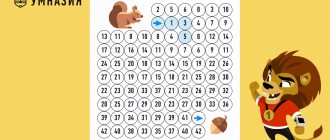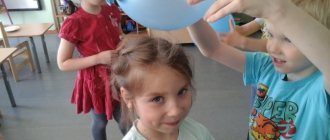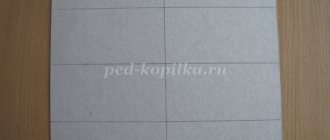Chemical experiments for children
Chemical experiments at home are good because they really look like real magic. It is better to conduct joint chemical experiments when the child is already in high school. But if you want to show your preschooler or elementary school student an exciting chemical experience, just carry out the necessary actions yourself, and let the child remain an observer.
Foam Pillar (or Elephant Toothpaste)
For children 10 years and older.
During the experiment, enough foam is formed that would be enough to brush the teeth of an elephant. It can be explained to a child over 10 years old that hydrogen peroxide decomposes into oxygen and water thanks to potassium iodide (or yeast), which acts as a catalyst (accelerator) of the reaction.
What you will need:
- flask or plastic bottle;
- hydrogen peroxide;
- potassium iodide or one tablespoon of dry yeast;
- liquid soap;
- one package of food coloring.
Step-by-step instruction:
- Pour about one glass of hydrogen peroxide into the container.
- Add dye and about 100 ml of liquid soap.
- Add a teaspoon of potassium iodide or a tablespoon of dry yeast pre-diluted in water - be careful and keep a sufficient distance from the container, the reaction will begin instantly.
Video instructions for the experiment:
Tomato glowing in the dark
For children from 10 years old.
If you carry out the experiment correctly, without excluding any of the necessary ingredients, the result will be a tomato that will glow in a dark room like a small night light. Experience will show the child that chemicals can change the properties of even representatives of the plant world.
Attention! Strictly follow safety rules when experimenting with tomatoes. If concentrated hydrogen peroxide gets on your skin, immediately wash the affected area with water. The luminous tomato obtained as a result of the experiment should never be eaten - it is life-threatening.
What you will need:
- tomato;
- Matchbox;
- White bleach or other cleaning product containing sodium hypochlorite;
- syringe;
- 10 tablets of hydroperite;
- water;
- container for mixing ingredients (for example, a deep cup).
Step-by-step instruction:
- First you need to clean the sulfur from 10-12 matches.
- Add the cleaning agent to the sulfur and mix thoroughly.
- Take the resulting mixture into a syringe and inject it into the tomato.
- Dilute 10 tablets of hydroperite in 15 ml of water - you get a 30% solution of hydrogen peroxide.
- Take the resulting solution into a syringe and inject it into the tomato.
- Take the tomato into a dark room and watch how it glows.
How to make a glowing tomato at home:
Dry fuel snakes
For children over 10 years old.
An impressive experiment will show how interesting the effects can be when different chemicals interact and are exposed to high temperatures.
What you will need:
- dry fuel (can be bought at a hardware store);
- a package of calcium gluconate (sold in pharmacies);
- the surface on which you will conduct the experiment and which you will not mind throwing away later (for example, a small board);
- lighter for a gas stove;
- kitchen tongs.
Step-by-step instruction:
- Place a tablet of dry fuel on your work surface.
- Light the fuel.
- Using tongs, place 6-8 calcium gluconate tablets onto the dry fuel.
- Watch how snakes begin to “grow” from the tablets.
Video instruction:
The most interesting experiences and experiments
The most interesting experiments for children of any age are quite simple to perform, and they require a minimum of available tools, which can be found in almost every home. For example, a child will probably be interested in participating in the creation of a volcanic eruption, making a multi-colored milk river, seeing the unusual interaction of raisins and corn, and inflating a balloon using an ordinary bottle.
Volcanic eruption - experiment with vinegar and lye
For children from seven years old.
A good experience to introduce a child to the structure of a volcano.
What you will need:
- vinegar;
- two tablespoons of baking soda;
- two containers - for example, flasks, jars or glasses.
Step-by-step instruction:
- Fill about half the container with vinegar.
- Pour baking soda into another container.
- Pour vinegar into a container of baking soda until the foaming soda shoots upward, reminiscent of a volcanic eruption.
- For greater entertainment, you can make a volcano out of plasticine around a container of soda, and add food coloring to the vinegar - this will make the eruption colorful.
Video instruction:
Volcanic eruption with hydrogen peroxide
For children from seven years old.
A good experience to introduce a child to the structure of a volcano.
What you will need:
- 2 glasses (one with clean water, the other empty);
- glass rod or spoon for stirring liquids;
- liquid soap;
- potassium permanganate (mangarnet);
- hydrogen peroxide.
Step-by-step instruction:
- Pour 3-4 granules of potassium permanganate into a tall glass.
- Add 150 ml water and stir.
- Add 1 tablespoon of liquid soap and stir again.
- Add 200 ml of hydrogen peroxide to start a real volcanic eruption!
Video instruction:
Colorful milk river
For children from four years old.
An experiment with a spectacular milk river delights children of any age - the colored patterns on the milk look like an artist’s masterpiece.
What you will need:
- medium depth plate;
- milk;
- food colorings;
- cotton buds;
- dishwashing detergent or liquid soap.
Step-by-step instruction:
- Pour milk to the middle of the plate.
- Add some dyes of different colors.
- Invite your child to touch the milk with a cotton swab - at first nothing will happen.
- Now soak a cotton swab in dish soap and touch the swab to the milk again.
- Watch the most beautiful milk “pictures” appear.
How to make multi-colored milk - video tutorial:
Journey of Raisins and Corn
For children aged four years and older.
With this experiment, you can demonstrate how smaller particles are “stronger” than larger objects.
What you will need:
- a handful of raisins;
- a handful of corn kernels;
- any clear soda;
- flask or plastic bottle.
Step-by-step instruction:
- Pour the soda into a flask or bottle.
- First you need to pour raisins into the container, let the child watch the movement of the raisins.
- Add corn kernels to the container and watch how the gas bubbles seem to push the corn and raisins to the surface, and when the bubbles burst, the corn and raisins smoothly flow down.
Video instruction:
A balloon that inflates itself
For children from seven years old.
The balloon experiment scientifically substantiates the fact that air can be released in closed containers. For a child's understanding, the experiment is quite simple - it can be shown to a preschool child, provided that an adult does all the work.
What you will need:
- 1 liter plastic bottle;
- soda;
- vinegar;
- teaspoon or funnel;
- one or more balloons.
Step-by-step instruction:
- Pour baking soda into the ball using a spoon or funnel until the ball is about one-third full.
- Fill a quarter of the bottle with vinegar.
- Place the balloon on the neck of the bottle - the soda will begin to pour into the bottle and the balloon will inflate.
How to conduct an experiment with a balloon that inflates itself:
Experiment with soda and phenolphthalein
For children 10 years and older.
The child will become familiar with the concept of “catalyst”.
What you will need:
- phenolphthalein;
- soda ash;
- water;
- cardboard or thick white paper;
- scissors;
- glass mixing glass;
- glass tube or spoon with a long handle.
Step-by-step instruction:
- First cut out figures, such as apples, from thick paper.
- Spray thick paper with phenolphthalein solution.
- Prepare a soda solution: 1-2 tsp. per 100 g of water. Stir.
- Spray the resulting solution onto thick paper until it changes color!
Video instruction:
Effervescent bath bomb
The child will learn how to make a sizzling bath ball, popular among children, with his own hands.
All ingredients are safe for skin.
What you will need:
- baking soda;
- citric acid (3 sachets);
- glass bowl;
- liquid soap;
- spoon;
- food coloring (if available);
- small plastic bomb molds (in the shape of a ball).
Step-by-step instruction:
- Place 3 tablespoons of baking soda in a bowl.
- Add 3 sachets of citric acid.
- Add 1-2 teaspoons of liquid soap to the bowl with the contents and mix everything with a spoon.
- Divide the resulting mass into 2 equal parts.
- Add a different color of food coloring (3 drops) to each part. Mix with gloved hands until the mixture is completely colored.
- Create colorful bath bombs. Place the mixture into plastic molds in the form of a ball.
- Leave the mixture in the mold for 2 hours.
Video instruction:







